Protecting Plants Before Winter ~ How, When and Why
Protecting Plants Before Winter ~ How, When and Why
It’s a question we frequently hear from customers: “Should I protect this plant during the winter?” The answer to this question is, “It depends…” not because we are trying to be vague, but because this decision is based on the type of plant, its location, and why protection is desired.
Plants can suffer all sorts of damage during the winter. Some get damaged leaves because of the wind, while others have scalded foliage due extreme cold or seasonal exposure to the sun. Landscaping that’s near the road can be hurt by the salt-spray kicked up by passing vehicles. Some shrubs, such as Sky Pencil Japanese holly or arborvitaes can be splayed open by heavy snow. Perennial plants might suffer in a winter when the ground alternately freezes and thaws, pushing their roots out of the ground. Here are some types of winter protection, and some situations where they can be helpful.
Burlap
Burlap is often used to protect plants from wind or salt spray, but there’s a right and a wrong way to do it. Never wrap burlap directly around plants – this can promote leaf damage and can wick moisture away from the plants. If you want to put up a burlap screen, first place stakes a few inches away from your shrubs and wrap the fabric around those supports.
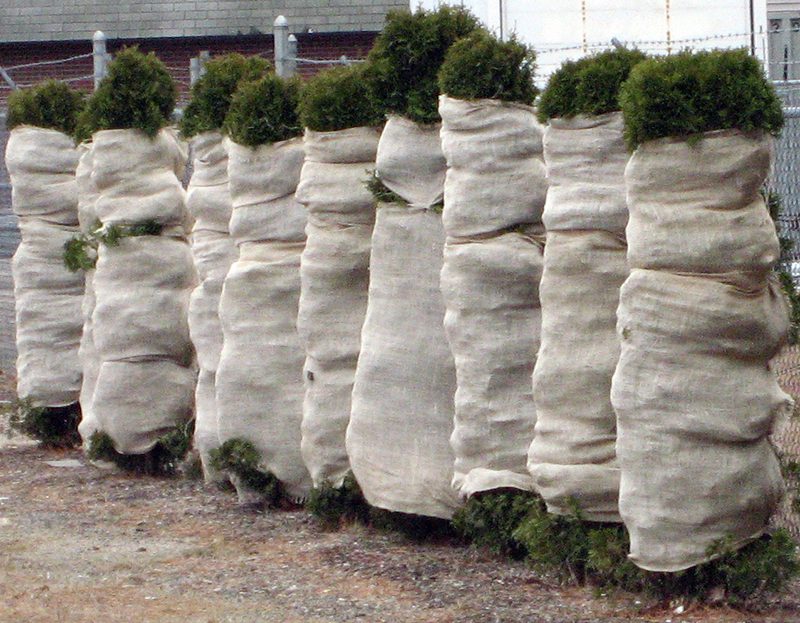
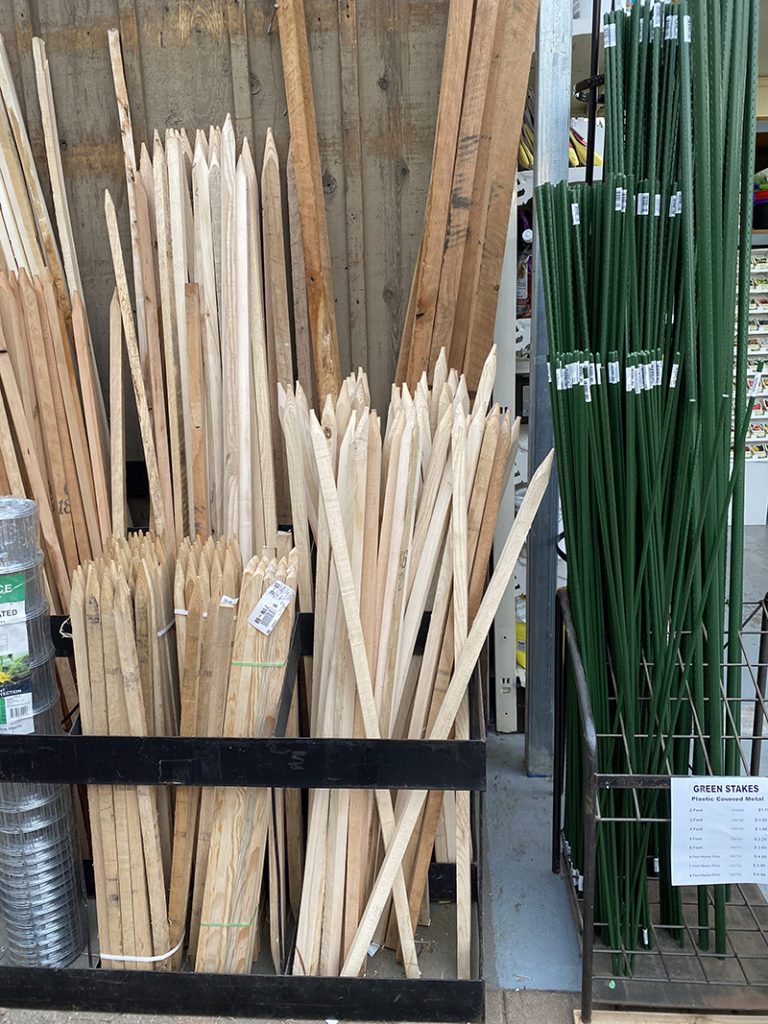
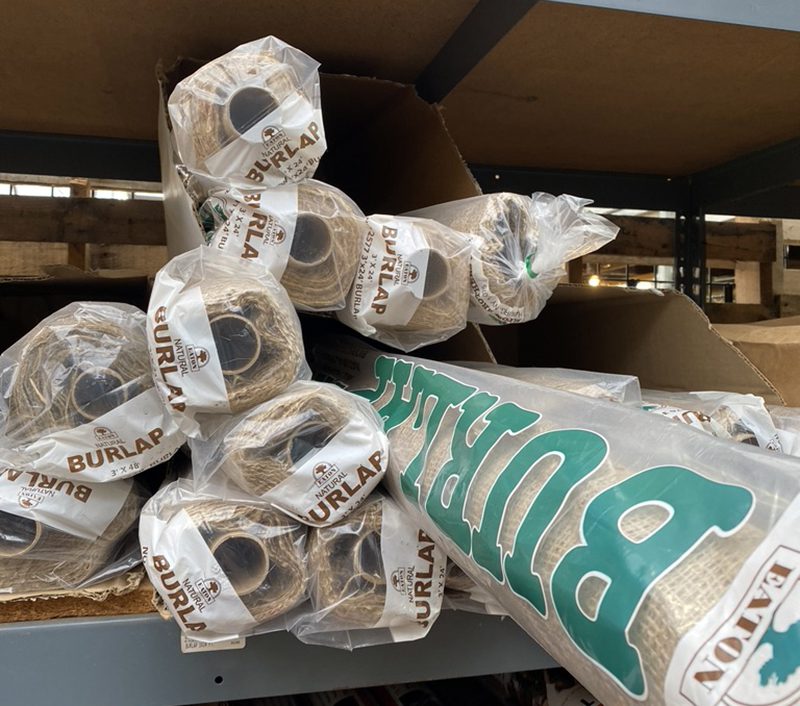
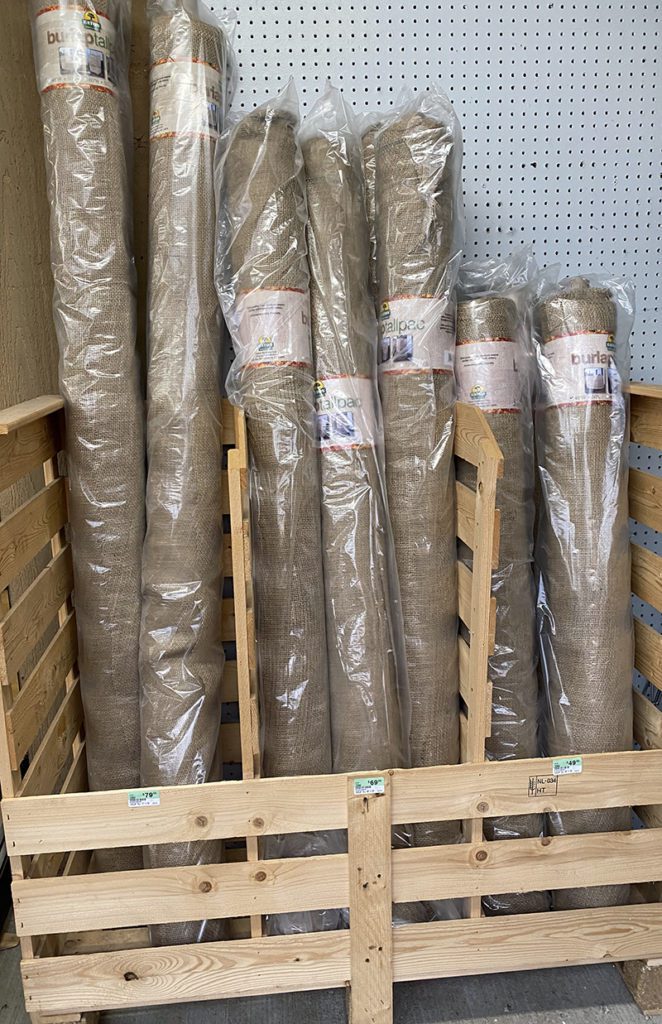
Leaf Scorch
Broadleaf evergreens are especially prone to leaf scorch in the winter. Dry conditions cause leaves to die, and strong winds or sun can desiccate foliage. Plants that are already stressed from summer drought can be especially prone to browned leaves.

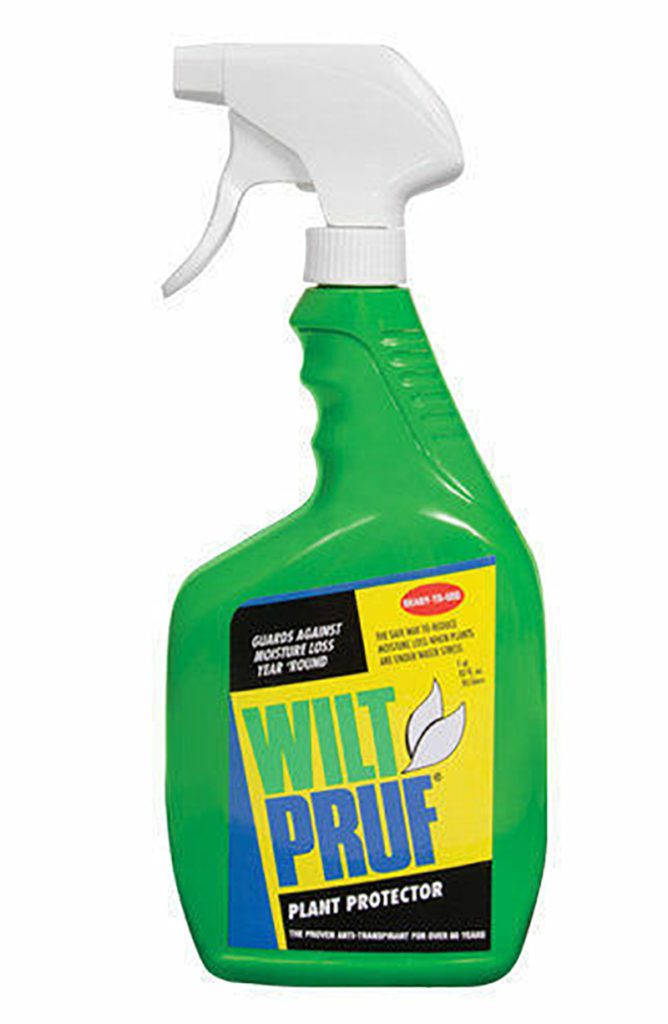
Apply Wilt Pruf in November or December when the temperatures are between 40 and 55 degrees. Do not apply just before rain is expected, as the product needs to dry. Spray the top and underside of leaves, and the canes on roses.
Hay, Leaves & Perennial Protection
Although most perennials are perfectly hardy on Cape Cod and don’t need protection, if you’re growing some marginally hardy plants and want to cover them, be sure not to put your materials down too early. When mulched too soon your protection can provide cozy places for mice and voles to live, and they will spend the winter eating the plants that you’ve been careful to cover.
The best protection for perennials is a layer of snow, but we can’t count on this in our area. Baring a nice, constant snow cover, perennials can be protected with any covering that has air spaces; you might use hay, chopped leaves, or evergreen branches. Do not use heavy materials such as bark mulch for winter protection.
Splitting Branches
Some plants are prone to splaying open or having their branches split when weighted with snow. Arborvitaes and Sky Pencil Japanese holly are two common examples. These can be loosely wrapped with foam-covered wire to invisibly hold stems together, or even tie the plant to a nearby structure. Just be sure not to tie anything tightly and totally around a stem; we often forget that such cords are there, and as the plant grows they strangle those stems.
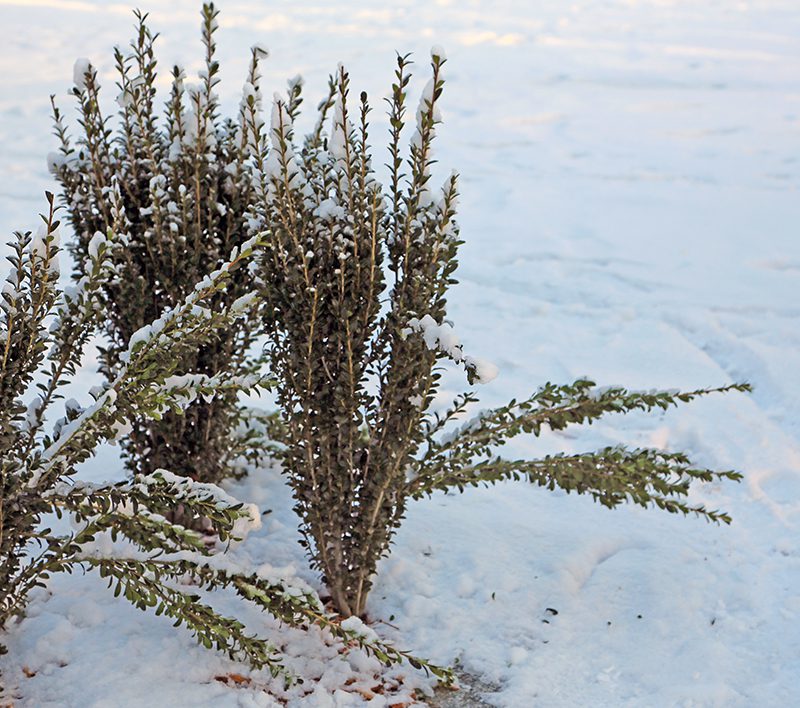
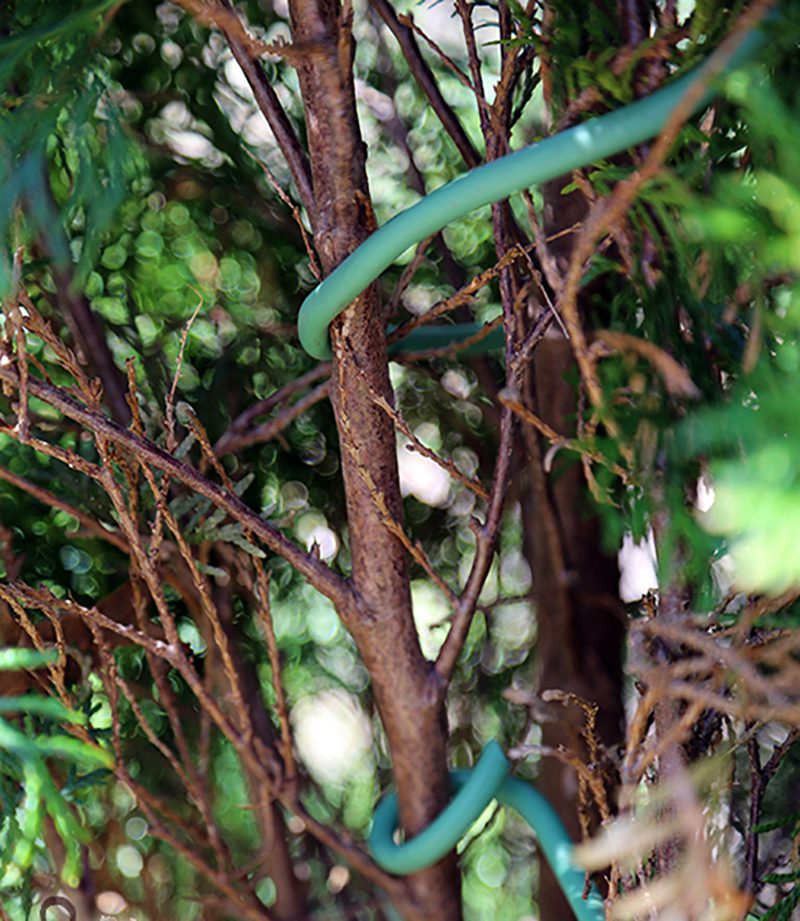
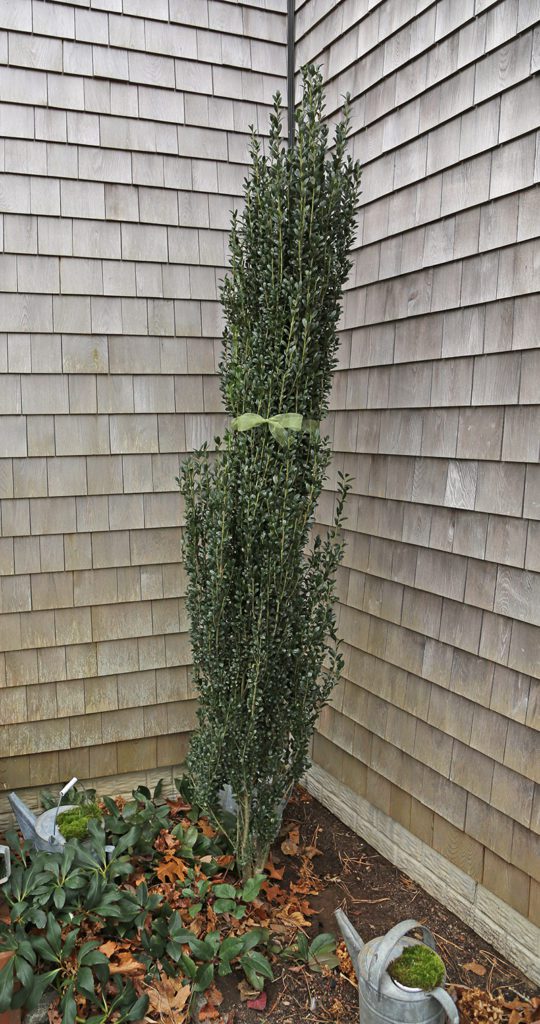
Vegetable Protection
Most cold-tolerant vegetables will be fine on the Cape through December, but if you want to extend your harvests further into the winter, you can use floating row cover to make a low tent over your plants.
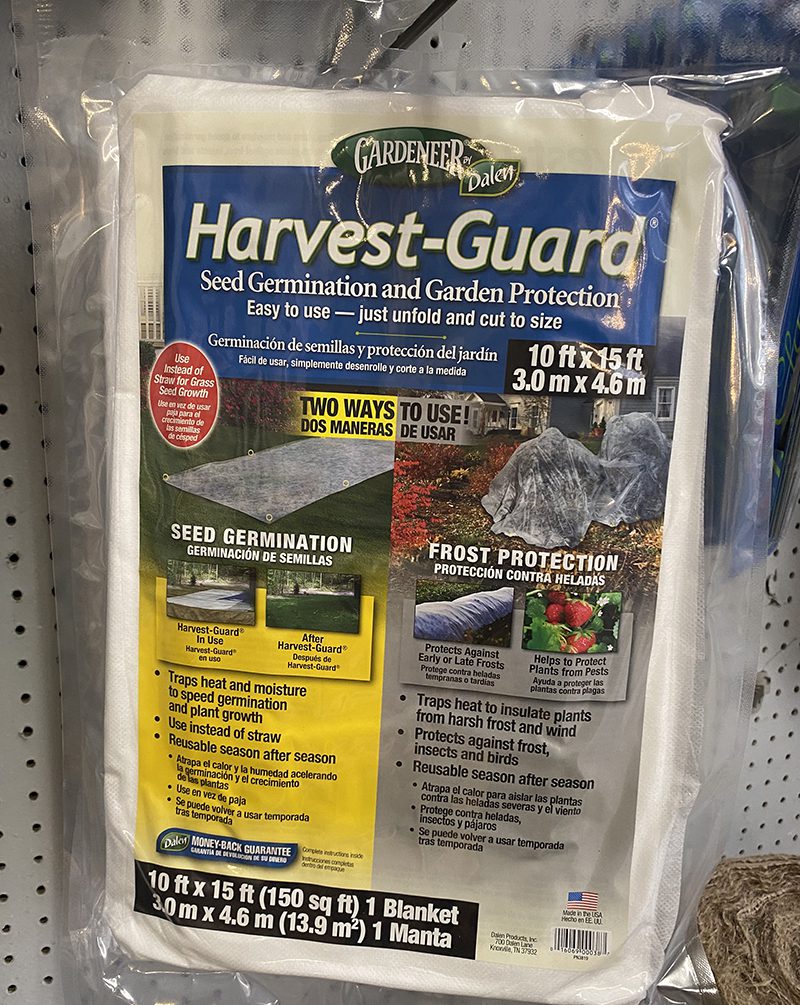
Critter Protection
We have a number of products in the store to help protect plants from deer, mice and other critters. Come in to see the range of repellants that are available.
5 Comments
Leave a Comment
Subscribe To Our Newsletter
Sign up for our weekly email about sales and events.

If my pencil Holly has a couple of branches splayed open, can I loosely tie it with ribbon to hold it together? Also will it grow strait up again so I can remove the ribbon? Thanks! Pat
Pat,
One downside of this plant is that they splay open frequently. You can tie it up, but that tie may need to be left in place for awhile so be sure not to circle the stem with it. (Tie the ribbon, or use a form-covered wire such as we sell in the store, around the entire plant, knotting the ribbon or wire only on itself, not around a stem of the plant. That’s so that if it’s left for a couple of years it will be impossible for that tie to strangle any of the stems.) Many people also tie this plant together in advance of a heavy storm.
I love the idea of tying it to the house with wire to help it grow upright. I recently saw a photo of a mature one that reached 15 feet. Never seen them that high. Wish they grew a little faster!
I turned my pond into a succulent garden this year, what is the best way to winterize it? Is covering it sufficient or do I need to bring the plants indoors?
It will all depend on what succulents you used and where you live. If you are on Cape Cod, bring a photo of your succulent garden into C.L. Fornari on a Friday and she’ll help you with this.